It depends on how you’re resting and when you plan to eat:
| Method of Resting | Time (Hours) |
|---|---|
| In the wrap on the counter | 2 |
| In a Faux Cambro or Cooler | 4-6 |
| Safely held overnight in an oven | 12-16 |
The goal is to rest down to slicing temperatures of 150-165F.
In my opinion, the longer you hold brisket – especially with an overnight rest, the better the meat tastes.
More on that below:
Why You Should Start Smoking Brisket a Day in Advance
You never have to time your cook.
My last 8 lb brisket took me 12 hours to smoke:

If I were to rest it for 2 hours, that’s a 14 hour cook time. Meaning, if my family wants to eat at a reasonable hour, I’d have to wake up at around 3-5 AM.
There’s no chance that’s happening.
Rather than simply resting your brisket, I’d suggest resting and then holding your brisket.
BBQ’s Best Kept Secret: The Overnight Hot Hold
Holding simply means to keep the briskets internal temperature above 140°F.
In a restaurant setting, holding is super important because of food safety.
Between 40 – 140°F, food enters the “Danger Zone.” In this temperature range, bacteria grow quite rapidly.
If you really think about it, it’s not really a “secret.”
When a BBQ joint smokes briskets, it’s a borderline requirement that they’re smoked a day in advance so that they’re ready by 11 am when they open.
That’s Great Dylan, But Can I Realistically Do this At Home?
These days, almost all my briskets are smoked on a weber kettle.
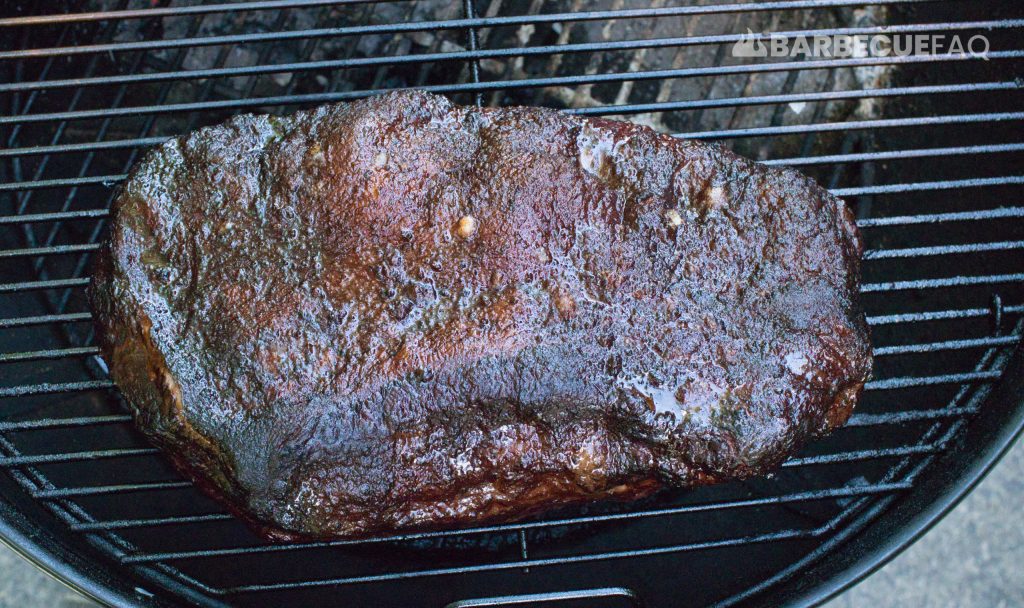
When it comes time for the inevitable stall, I’ll usually wait till around 175F-180F and then foil boat the meat.
From there, I stick the brisket in my electric smoker to finish.
If you don’t have an electric smoker you could use:
- Toaster oven (if the brisket is smaller)
- Kitchen oven w/ the door cracked with a wooden spoon as most kitchen ovens can only go as low as 200F
Now there’s 2 Ways to Look at Hot Holding
1. You could smoke the brisket until probe tenderness
ie. the entire brisket is tender and the probe slides in and out of the meat with no resistance.
This will typically happen at around 195-205F.
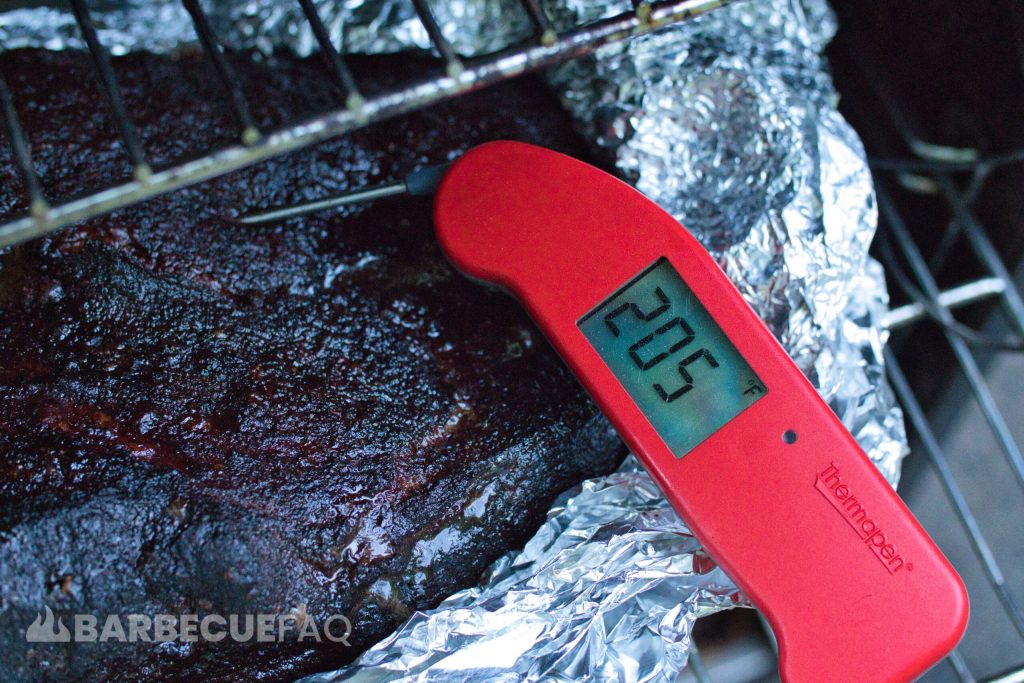
When this happens you let the brisket rest down to 150-165F in the wrap.
Set your electric smoker, kitchen oven, or toaster oven to a calibrated temperature (for me its 175F) so that the internal temperature of the brisket stays above 140F.
Put the brisket in the holding oven overnight and slice the next day when you’re ready to eat.
2. Smoke the brisket to near tenderness and then hot hold overnight without a rest
The reason for doing it this way:
- The meat is juicier because it sweats out less moisture
- Less potential to overcook the meat
You’d essentially smoke the brisket until around 190F in the thickest part of the flat.
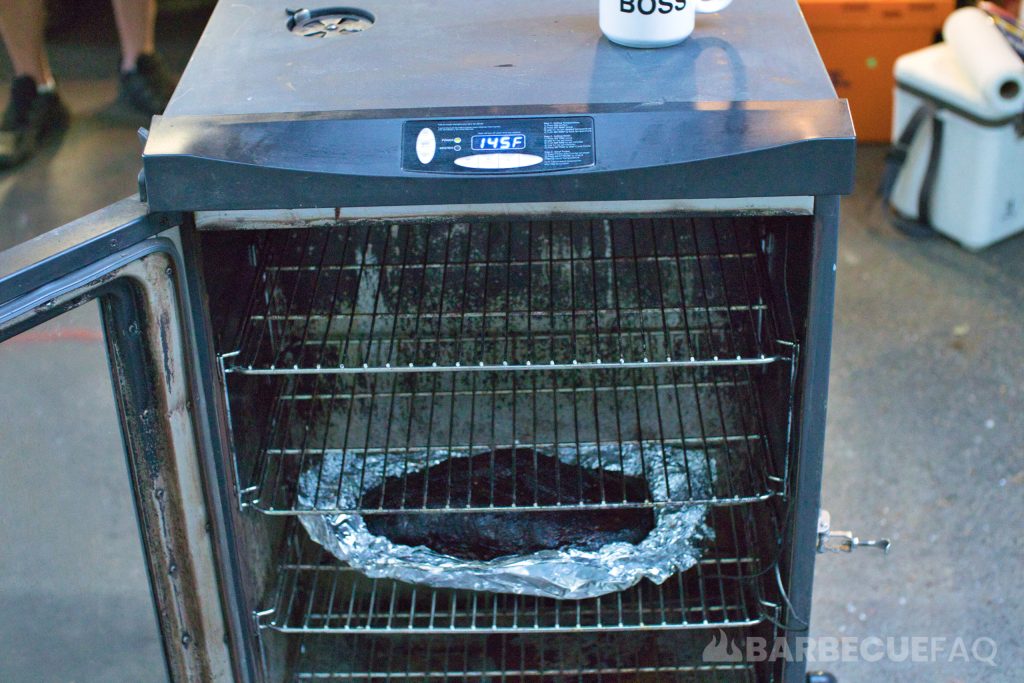
Leave the brisket wrapped, drop the temperature of your oven to 175F (or your calibrated temperature), and then put the brisket in the holding oven overnight with NO rest.
What will happen is the meat will continue to carry over cook and continue to gelatinize the connective tissues in the meat.
This is personally what I do and it’s essentially foolproof for moist, tender meat.


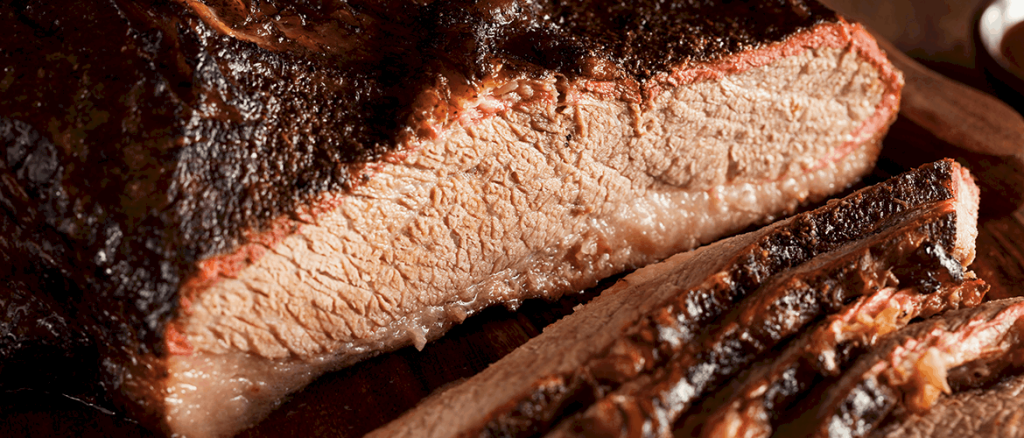

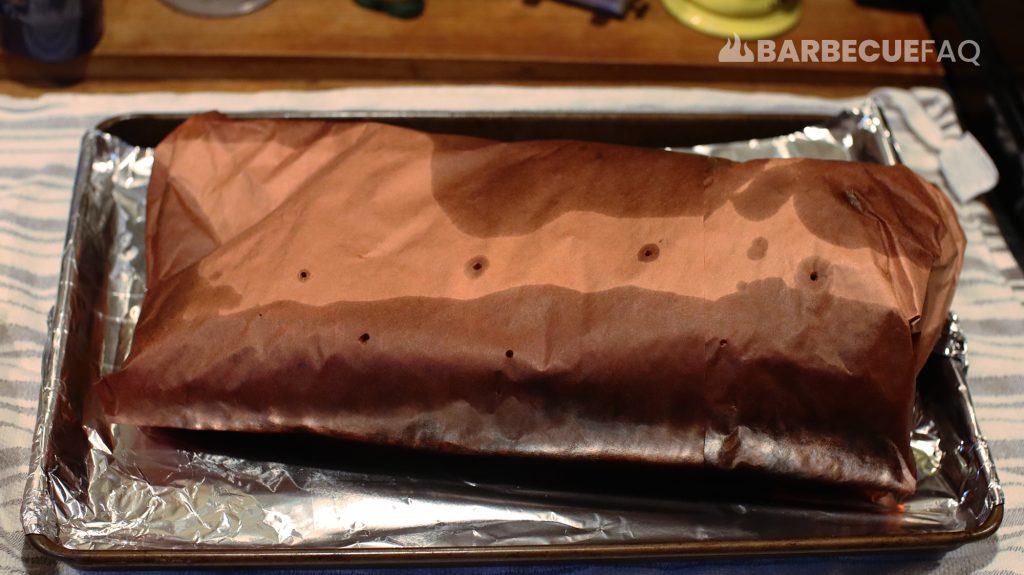
2 comments
Jaime
What’s the longest you can hold a brisket without it falling apart? A friend asked me to cook three for a party and it won’t be served until 5PM. I usually start my cook 24hrs before service (12hr cook 12hr hold), but I’d rather not cook from 5pm to 5am. I’d much rather start at noon and hold for 17hrs
Dylan Clay
Holding for 17 hours is totally doable. It’s more so about what internal temperature you go to when you hold – at least in my opinion. For instance, going to tenderness and then holding for 17+ hours is going to result in overcooked, dry meat (most likely). Where-as you could take your meat off at around 190F internal, and put it into your holding oven without a rest (while still wrapped) with the holding oven set to 160F. This way the meat continues to tenderize via carry over cooking and also stays above 145F for food safety.
Hope that helps Jaime!
-Dylan